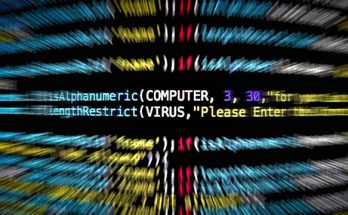Table of Contents
Malware, short for malicious software, is a significant threat to individuals, organizations, and governments alike. Cybercriminals deploy various types of malware to compromise systems, steal sensitive data, or cause disruption. Understanding the characteristics and methods of these malware variants is crucial for enhancing cybersecurity.
In this article, we will explore the most common types of malware, provide real-world examples, and offer tips on prevention and removal.
Introduction
Malware comes in diverse forms, each with its unique way of infecting systems and achieving its objectives. The following are some of the most prevalent types:
- Viruses
- Trojans
- Worms
- Ransomware
Let's see each one of them in detail.
Viruses
Viruses are perhaps the most well-known type of malware. They attach themselves to legitimate files or programs, and when these infected files are executed, the virus activates, replicates, and spreads to other files and systems. Viruses can infect various files, including documents, executable programs, and even boot sectors.
Viruses can cause a range of harmful effects, such as data corruption, system crashes, and unauthorized access to sensitive information. An example of a notorious virus is the "ILOVEYOU" virus, which caused widespread damage in 2000 by overwriting files and spreading through email attachments.
Prevention and Removal
- Keep your operating system and antivirus software up to date.
- Be cautious when opening email attachments or downloading files from untrusted sources.
- Regularly perform full system scans to detect and remove viruses.
Trojans
Trojans, named after the deceptive wooden horse from ancient Greek mythology, disguise themselves as legitimate software or files to trick users into executing them. Once inside the system, Trojans provide backdoor access to attackers, allowing them to gain control over the compromised machine.
Trojans can be employed for various malicious activities, including data theft, spying, and launching Distributed Denial of Service (DDoS) attacks. An infamous Trojan is the "Zeus" Trojan, known for stealing financial information from banking websites.
Prevention and Removal
- Be cautious when downloading files from unfamiliar websites or using unverified software.
- Regularly scan your system for any suspicious files or activities.
- Employ a reliable firewall to monitor incoming and outgoing traffic.
Worms
Worms are self-replicating malware that can spread independently over computer networks. Unlike viruses, they do not require a host file to spread. Instead, they exploit vulnerabilities in network protocols to infect other systems. Worms can rapidly propagate, causing network congestion and disrupting operations.
The "WannaCry" ransomware worm is a notable example, which affected thousands of systems worldwide in 2017. It encrypted files on infected computers and demanded ransom for decryption keys.
Prevention and Removal
- Patch known vulnerabilities in software and operating systems to prevent worm attacks.
- Use network segmentation to contain the spread of worms within the network.
- Invest in intrusion detection and prevention systems to detect and stop worm activity.
Ransomware
Ransomware is a type of malware that encrypts a victim's files, rendering them inaccessible until a ransom is paid to the attacker. Ransomware attacks have increased significantly in recent years, targeting both individuals and organizations. The ransom demand is usually in cryptocurrency, providing anonymity to the attackers.
The "NotPetya" ransomware attack in 2017 caused widespread disruption to companies worldwide, including critical infrastructure systems.
Prevention and Removal
- Regularly back up important data to a secure location to avoid data loss in case of a ransomware attack.
- Employ behavior-based detection systems to identify suspicious activity.
- Educate users about the risks of clicking on links or opening attachments from unknown sources.
Conclusion
Understanding the different types of malware and their characteristics is essential for effective cybersecurity. By being vigilant and implementing preventive measures, users and organizations can minimize the risk of falling victim to malware attacks. Regularly updating software, using reputable antivirus solutions, and educating users are critical steps in staying protected from evolving cyber threats.



